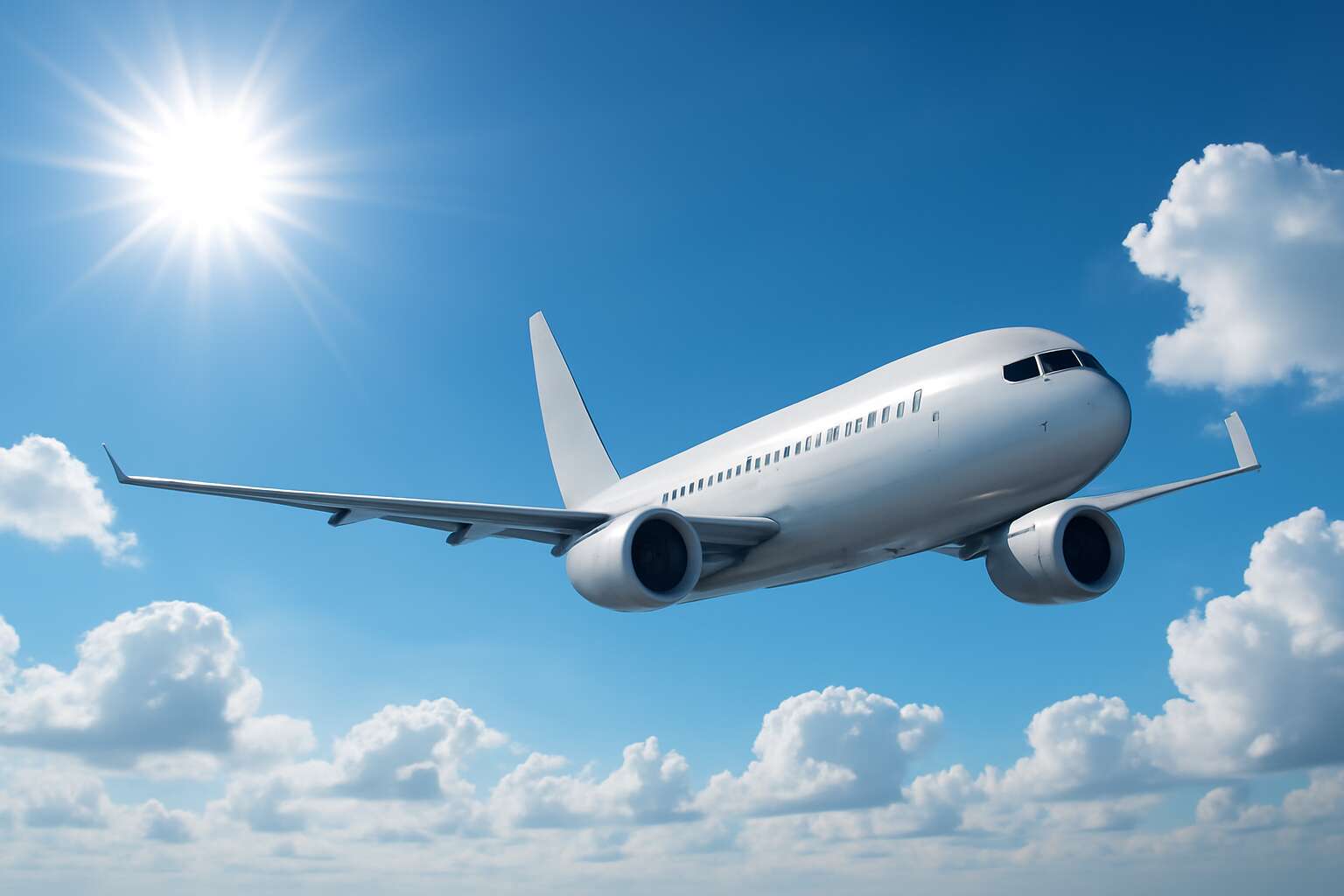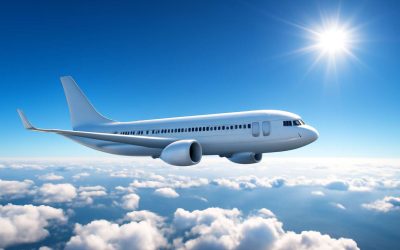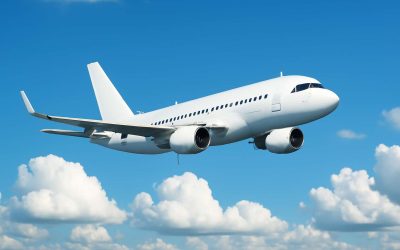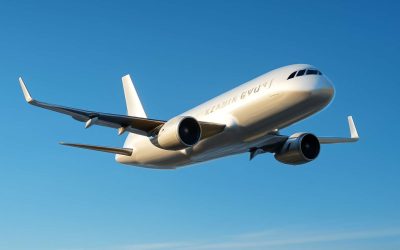Understanding Aviation Safety
The Evolution of Airplane Safety – A brief history of safety improvements in aviation
Since the dawn of commercial flight, questions about safety have hovered in the minds of travelers like an unseen storm. Yet, the evolution of airplane safety has been nothing short of extraordinary. From the rudimentary and often perilous flights of early aviation to today’s meticulously engineered aircraft, each breakthrough has been driven by an unyielding pursuit of security. The truth is, **are aeroplanes safe** has become a question rooted in decades of rigorous safety standards and technological advancements.
Over the years, the aviation industry has adopted a relentless cycle of innovation and regulation. Major milestones include the introduction of jet engines, advanced navigation systems, and sophisticated safety protocols. The development of comprehensive pilot training programs and real-time monitoring technologies has transformed flying into one of the safest modes of transport. Today, the industry’s commitment to safety is encapsulated in practices such as:
- Continuous aircraft maintenance and inspection routines
- Implementation of automated safety systems
- Global safety audits and standardized procedures
Despite the inherent risks, these improvements underscore a fundamental truth: the question of **are aeroplanes safe** is answered by the industry’s unwavering dedication to safeguarding human lives. The journey from peril to precision in aviation safety is a testament to human ingenuity and moral responsibility, making flying not just a necessity but a marvel of modern engineering and care.
How Aviation Safety Is Assessed – Standards and regulations governing flight safety
When we consider the question, “are aeroplanes safe,” we must look beyond the aircraft themselves to the meticulous standards that govern aviation safety worldwide. Aviation safety is assessed through rigorous frameworks established by global and national authorities, such as the International Civil Aviation Organization (ICAO) and South Africa’s Civil Aviation Authority (SACAA). These organizations set steadfast regulations that ensure every flight adheres to the highest safety protocols.
Each aircraft operation undergoes detailed safety audits and adherence to strict standards. This includes regular inspections, maintenance routines, and pilot training programs that are continuously updated. The industry’s safety culture is rooted in transparency, with incident reporting and data analysis playing a crucial role in preventing future accidents. To streamline safety oversight, authorities often utilize:
- Compliance with international safety standards
- Implementation of automated safety monitoring systems
- Ongoing pilot education and simulation training
All these measures work together to reinforce the answer to “are aeroplanes safe” — a resounding yes, supported by an unwavering commitment to protect lives and foster confidence in the skies. The relentless pursuit of safety in aviation is a testament to human resilience and a shared dedication to making every journey secure and reassuring.
The Role of International Agencies – ICAO, FAA, and other regulatory bodies
When pondering whether “are aeroplanes safe,” it’s essential to recognize the backbone of global aviation safety: international agencies committed to maintaining impeccable standards. Organizations like the International Civil Aviation Organization (ICAO) and the Federal Aviation Administration (FAA) play pivotal roles in shaping policies that keep the skies secure. These agencies set comprehensive guidelines that airlines worldwide must follow, ensuring a consistent safety ethos across borders.
ICAO, a specialized UN agency, develops international standards and promotes cooperation among nations. Meanwhile, the FAA in the United States enforces rigorous safety protocols, overseeing everything from aircraft design to pilot licensing. In South Africa, the Civil Aviation Authority (SACAA) mirrors this dedication, aligning local practices with global benchmarks. This synergy creates a formidable safety net, reassuring travelers that their question—“are aeroplanes safe”—has a confident answer rooted in meticulous regulation and oversight.
- Regular safety audits and inspections
- Advanced safety monitoring systems
- Ongoing pilot training and certification programs
These authoritative bodies, through their unwavering vigilance, weave a safety framework that transforms flying from a risk to a reliable mode of travel. It’s this global commitment that underscores how thoroughly the question—are aeroplanes safe—has been answered by decades of relentless pursuit of excellence in aviation safety standards.
Statistics and Data on Aviation Safety
Accident Rates and Trends – Analyzing recent data on airplane incidents
Despite the dramatic headlines that sometimes punctuate the news, the truth about aviation safety is remarkably reassuring. Recent statistics reveal that the accident rate per million flights has plummeted over the past decade, making air travel one of the safest modes of transportation available. In fact, the International Air Transport Association (IATA) reports that the global jet accident rate in 2022 was an astonishing 1.02 accidents per million flights—an all-time low. Such data underscores that, when asking “are aeroplanes safe,” the answer is increasingly leaning toward a confident yes.
What’s even more compelling is the trend: incidents are not only decreasing but are often the result of rare, unpredictable circumstances rather than systemic flaws. The aviation industry’s rigorous safety protocols, combined with technological advancements, continue to bolster these impressive figures. To illustrate, the likelihood of being involved in a fatal plane crash remains exceedingly minimal—about 1 in 11 million flights. Truly, in the realm of modern travel, flying has evolved into an extraordinary feat of safety, backed by meticulous data and unwavering commitment to passenger security.
Comparison with Other Modes of Transport – How air travel compares to cars, trains, and ships
When pondering the safety of modern transportation, air travel often faces a skeptical glare, yet statistics tell a compelling story. In comparison to cars, trains, and ships, aeroplanes consistently outperform in safety metrics. For instance, the likelihood of being involved in a fatal incident when flying is approximately 1 in 11 million flights—truly staggering when juxtaposed with driving, where the risk is roughly 1 in 114. Such data prompts a profound question: are aeroplanes safe? The answer, backed by rigorous global data, is a resounding yes.
Looking at the broader landscape of transportation safety, air travel’s record is nothing short of extraordinary. While road accidents remain a leading cause of injury worldwide, flying boasts an accident rate that is significantly lower. The contrast is even more striking when comparing ships, where maritime disasters, though less frequent, often have a higher fatality rate per incident. This statistical disparity underscores the exceptional safety record of aviation, making it a preferred choice for those seeking efficiency without compromising security.
- Air travel has an accident rate that is approximately ten times safer than driving.
- Compared to rail transport, flying still maintains a superior safety record, especially in terms of fatalities per billion passenger-kilometers.
- Maritime incidents, although less frequent, tend to have higher casualty rates per event, further emphasizing air travel’s safety advantage.
Indeed, the meticulous standards, regulatory oversight, and continuous technological innovations have cemented aviation’s reputation as one of the safest modes of transportation. So, when the question arises—are aeroplanes safe? The data, complemented by decades of unwavering industry commitment, suggests the answer is confidently affirmative.
Passenger Safety Records – Onboard safety statistics and passenger confidence
When pondering the safety of modern air travel, statistics whisper a reassuring truth that’s hard to ignore. The passenger safety record in aviation is nothing short of extraordinary, with onboard safety statistics consistently showcasing remarkable resilience and reliability. Despite the complex choreography of thousands of flights daily, the likelihood of being involved in a fatal incident when flying is approximately 1 in 11 million flights. That figure, truly staggering, underscores the meticulous standards and rigorous safety protocols that define the industry.
Passenger confidence in aviation remains high, driven by transparent safety data and continuous technological advancements. In fact, many travelers find comfort in knowing that the aviation industry’s commitment to safety surpasses that of other modes of transportation. For example, flying is about ten times safer than driving, and it maintains a superior safety record compared to rail transport in terms of fatalities per billion passenger-kilometers. This statistical landscape strongly suggests that when asking—are aeroplanes safe?—the answer resonates with a confident yes, underpinned by decades of unwavering dedication to passenger security and safety excellence.
Aircraft Technology and Maintenance
Advancements in Aircraft Design – Modern safety features in contemporary airplanes
In the shadowed corridors of modern aviation, technology and meticulous maintenance weave an intricate tapestry of safety—an unseen armor shielding millions of souls each day. Advances in aircraft design have birthed a new era where safety features are no longer mere add-ons but integral to every flight. These innovations whisper promises of security, even in the face of darkness and doubt.
Contemporary airplanes are equipped with sophisticated systems that monitor and respond to potential threats in real time. From fly-by-wire controls that provide unparalleled stability to enhanced cabin pressurization ensuring passenger comfort at high altitudes, each element is a testament to relentless pursuit of safety. Modern safety features such as advanced radar, terrain awareness systems, and redundant power sources serve as vigilant sentinels, guarding against the unknown. With each technological leap, the question—are aeroplanes safe—grows more assured, woven into the very fabric of aircraft design.
- Automatic emergency landing systems
- Real-time weather tracking and alerts
- Enhanced fire suppression mechanisms
- Structural innovations for increased resilience
These advancements, coupled with rigorous maintenance protocols, forge an unbreakable chain of safety that echoes through every flight, transforming the sky into a realm where fear is slowly eclipsed by trust.
Regular Maintenance and Inspections – Ensuring safety through rigorous checks
Behind the sleek exterior and whisper-quiet engines lies an intricate web of aircraft technology designed to keep passengers secure. Regular maintenance and meticulous inspections are the backbone of this safety net, transforming the sky from a realm of uncertainty into a domain of unwavering reliability. Every bolt, wire, and panel undergoes rigorous checks to identify and rectify potential issues before they ever reach the cabin. This process is not merely routine; it’s an unyielding commitment to safety that has evolved over decades.
Aircraft maintenance protocols are comprehensive, encompassing scheduled inspections, component replacements, and system calibrations. These checks are guided by strict international standards, ensuring consistency across all operators. An example of this is the use of advanced diagnostic tools that detect subtle anomalies—silent indicators of future trouble. With such precision, the question—are aeroplanes safe—becomes increasingly assured, reaffirmed by the relentless pursuit of perfection in maintenance routines.
In addition to routine inspections, modern aircraft are equipped with real-time monitoring systems that alert crew and ground engineers to any irregularities. This layered approach ensures that potential safety threats are addressed swiftly and effectively. The combination of cutting-edge aircraft technology and a culture of rigorous maintenance fosters an environment where safety is woven into every flight, leaving little room for doubt about the reliability of air travel.
Pilot Training and Certification – The importance of skilled personnel in safety
Behind every successful flight lies the unwavering dedication of skilled personnel whose expertise transforms complex machinery into a marvel of safety and reliability. The critical role of pilot training and certification cannot be overstated; it’s the cornerstone that upholds the integrity of air travel. Well-trained pilots are equipped with the knowledge to navigate unpredictable conditions, manage emergencies, and execute precise maneuvers, ensuring passenger safety at every juncture.
Modern aviation authorities enforce rigorous certification standards that pilots must meet, often involving hundreds of hours of simulation and real-world experience. This dedication to excellence creates a formidable line of defense against potential hazards. An essential part of this process is ongoing training, which includes scenario-based exercises designed to prepare pilots for even the most unforeseen circumstances. Such relentless pursuit of mastery underscores the question—are aeroplanes safe—affirming that safety is woven into the very fabric of aviation’s culture.
Furthermore, aircraft technology continually evolves, integrating sophisticated safety systems that work seamlessly alongside human expertise. These advancements, combined with the meticulous training of pilots, form a layered safety net that guarantees passenger confidence. When you board a plane, you’re placing trust not only in the aircraft itself but also in the highly skilled professionals behind its operation, making air travel one of the safest modes of transportation available today.
Safety Protocols and Emergency Procedures
Pre-Flight Safety Checks – Ensuring aircraft readiness before flights
When pondering the question, “are aeroplanes safe?”, it’s vital to recognize the meticulous safety protocols and emergency procedures embedded in every phase of flight. Pre-flight safety checks are more than routine; they are a sophisticated dance of precision, ensuring aircraft readiness before each journey. Every bolt, wire, and system undergoes rigorous inspection, often involving detailed checklists that pilots and maintenance crews follow scrupulously. These protocols serve as the backbone of aviation safety, preventing potential issues before they even arise.
Furthermore, emergency procedures are constantly refined through simulation training, enabling crew members to respond swiftly and effectively if unforeseen circumstances occur. Modern aircraft are equipped with advanced safety features such as automated alert systems and reinforced structures that enhance passenger protection. This relentless commitment to safety, combined with comprehensive pre-flight checks, reassures travelers that their journey is supported by a robust safety framework. Ultimately, these measures reinforce the confidence that, yes, are aeroplanes safe—an assurance rooted in decades of technological progress and unwavering vigilance.
In-Flight Safety Measures – Passenger instructions and cabin safety
Few modes of transport inspire as much confidence as modern aviation. With over 4 billion passengers flying annually worldwide, the question often arises: are aeroplanes safe? The truth is, the safety protocols and emergency procedures built into every flight are extraordinary. These measures ensure that safety remains paramount from the moment you step on board.
In-flight safety measures are comprehensive and meticulously designed. Passengers receive clear instructions on seatbelt use, emergency exits, and the location of safety equipment. Cabin crew are trained to handle a wide range of scenarios, from medical emergencies to evacuation procedures. Regular drills and simulations keep their skills sharp, making sure they respond swiftly if needed.
Here’s what you might encounter in-flight safety protocols:
- Passenger instructions on safety procedures
- Use of oxygen masks in case of cabin depressurization
- Safety demonstrations before takeoff
- Emergency lighting guiding passengers to exits
Modern aircraft are equipped with advanced safety features, including reinforced cabins, automated alert systems, and sophisticated fire suppression equipment. These tools, combined with rigorous crew training, create a formidable safety net. So, with all these measures in place, it’s clear that the answer to ‘are aeroplanes safe?’ is a resounding yes. The entire system is designed to protect passengers at every stage of their journey, providing reassurance that flying remains one of the safest ways to travel.
Emergency Response Strategies – How airlines handle crises and evacuations
In the theater of modern travel, where vast skies stretch endlessly and steel wings cut through clouds, questions often echo: are aeroplanes safe? With over 4 billion passengers soaring worldwide each year, this query resonates with a profound importance. Behind every flight lies a labyrinth of safety protocols and emergency response strategies, meticulously crafted to transform potential chaos into orchestrated calm.
Airlines deploy rigorous safety protocols that serve as the backbone of confidence in the skies. When crises emerge, these strategies unfold like a well-rehearsed symphony—each crew member knowing their role. Emergency procedures, from rapid evacuations to medical crises, are ingrained through relentless drills, ensuring swift, decisive action. For example, cabin crews are trained to execute evacuation procedures within minutes, using equipment such as slide rafts and emergency lighting to guide passengers safely away from danger.
Furthermore, safety measures extend beyond human preparedness. Modern aircraft are fortified with advanced safety features—reinforced cabins withstand impacts, automated alert systems monitor every nuance, and fire suppression equipment stands ready for deployment. This formidable safety net underscores the unwavering commitment to passenger protection. When you ask—are aeroplanes safe?—the answer is reinforced by these layered, intricate responses to even the most unlikely crises, reaffirming that flying remains one of the safest modes of transportation.
Common Myths and Misconceptions
Are Small Planes More Dangerous? – Debunking myths about aircraft size
One of the most pervasive myths about aircraft safety is that small planes are inherently more dangerous than large commercial jets. It’s a misconception that often stems from media sensationalism—fewer passengers, more visible accidents, and a sense of vulnerability. However, the reality is quite different. While smaller planes might seem riskier due to their size, they typically operate in different contexts, often involving private flights or specialized missions, which can influence their safety records.
In truth, the safety of any aircraft relies on rigorous regulations, advanced technology, and meticulous maintenance, regardless of its size. Modern small planes are equipped with sophisticated safety features and are subject to strict oversight, similar to their larger counterparts. Therefore, the question “are aeroplanes safe?” transcends size and instead hinges on the comprehensive safety protocols governing aviation today. The myth that smaller aircraft are more dangerous simply doesn’t hold up against the data or the strict standards that all aircraft must meet.
Does Airline Age Affect Safety? – Impact of aircraft age on safety standards
One of the most persistent myths surrounding air travel is that older aircraft are inherently less safe. It’s a misconception that many cling to, perhaps because aging planes evoke a sense of vulnerability or nostalgia. However, the reality is quite different. Modern aviation relies heavily on stringent safety standards that apply regardless of an aircraft’s age. Many older planes undergo continuous upgrades and refurbishments, ensuring they meet current safety regulations. In fact, aircraft maintenance and rigorous inspection routines are designed to detect potential issues long before they become hazardous.
Aircraft age alone does not determine safety; it’s the quality of maintenance, adherence to safety protocols, and technological upgrades that truly matter. Aviation authorities worldwide, including South Africa’s Civil Aviation Authority, enforce policies that mandate regular inspections and upgrades. This layered approach to safety ensures that whether a plane is new or decades old, passengers can trust that their journey will be secure. So, when pondering the question, “are aeroplanes safe,” it’s vital to consider the comprehensive safety standards that govern the entire fleet, not just their age.
Is Turbulence a Major Safety Threat? – Understanding turbulence and safety
Many travelers harbor a lingering myth: turbulence is a sign of danger. It’s a misconception rooted in the uncomfortable jostling and unpredictable bumps that aircraft often encounter mid-flight. But in reality, turbulence—while unnerving—rarely poses any genuine threat to safety. Modern airplanes are engineered to withstand far more stress than they typically encounter during turbulent episodes, which are, after all, a natural part of atmospheric dynamics.
Aircraft safety is maintained through rigorous standards that ensure planes can handle these atmospheric whims without compromising integrity. In fact, turbulence is factored into design specifications, and pilots are highly trained to navigate it smoothly, minimizing discomfort without risking safety. So, when pondering the question, “are aeroplanes safe,” it’s essential to recognize that turbulence, though a common concern, is not a major safety threat but rather a predictable and manageable phenomenon.
Understanding this alleviates unnecessary anxiety, reaffirming that the layered safety protocols in aviation are adept at safeguarding passengers against even the most turbulent skies. After all, safety in air travel hinges on systematic, meticulous procedures—not on avoiding every bump along the way.
Future of Aviation Safety
Emerging Technologies – AI, automation, and new safety systems
The future of aviation safety is evolving rapidly, driven by groundbreaking technologies that promise even higher standards of security. Artificial Intelligence (AI) and automation are transforming how airlines monitor and respond to potential threats, making flights safer than ever before. These systems analyze vast amounts of data in real-time, predicting and preventing issues before they escalate. New safety systems, such as advanced sensor networks and predictive maintenance tools, increase aircraft reliability and reduce the risk of mechanical failure.
Emerging innovations are also enhancing pilot assistance and passenger safety. For example, AI-powered decision support tools help pilots manage complex situations more effectively, while automated safety protocols ensure quick responses during emergencies. As these technologies become more widespread, confidence in the safety of aeroplanes continues to grow. It’s reassuring to know that the aviation industry is committed to pushing boundaries—ensuring that, in the years ahead, are aeroplanes safe remains a top priority with cutting-edge solutions driving progress.
Sustainable and Safer Aircraft – Green innovations and their safety implications
The future of aviation safety isn’t just about keeping passengers secure; it’s about pioneering green innovations that make flying not only safer but also more sustainable. As airlines and manufacturers embrace eco-friendly technologies, the question arises: are aeroplanes safe amidst this green revolution? The answer is a resounding yes. New materials and fuel-efficient engines are rigorously tested to meet the highest safety standards, ensuring that sustainability doesn’t come at the expense of security.
Innovations such as hybrid-electric propulsion and biofuels are transforming aircraft design, reducing carbon footprint while maintaining, if not exceeding, safety benchmarks. Plus, these green aircraft incorporate advanced safety features—like enhanced sensor networks and real-time health monitoring—that continuously scrutinize aircraft integrity. Here are some key points about the safety implications of these innovations:
- Improved reliability through predictive maintenance, which detects potential issues before they manifest.
- Enhanced emergency protocols utilizing environmentally friendly technologies that are seamlessly integrated into the aircraft systems.
- Stricter regulatory standards ensuring that new green technologies adhere to rigorous safety assessments—so, yes, are aeroplanes safe? Absolutely, especially as these eco-friendly solutions undergo relentless testing and certification.
In essence, the pursuit of sustainability in aviation is not a compromise but an evolution—one that elevates safety to new heights. As the industry continues to innovate, passengers can rest assured that greener aircraft are not only better for the planet but are also among the safest flying machines ever built.
Global Efforts to Enhance Safety – International collaborations and upcoming standards
The future of aviation safety is a symphony of international collaboration, a testament to humanity’s relentless pursuit of excellence in the skies. As global agencies like ICAO and the FAA forge ahead, they craft emerging standards that elevate safety to a universal language—one spoken through meticulous regulations, cutting-edge technology, and unwavering commitment. These bodies are not merely setting rules; they are architecting a global safety net, ensuring that each new innovation, each green leap forward, upholds the highest safety standards.
With this concerted effort, aviation is transforming into an intricate tapestry woven with precision and care. The harmonization of safety protocols across borders means that whether in Johannesburg or Johannesburg’s sister cities worldwide, passengers can trust that the question—are aeroplanes safe?—resonates with a confident yes. This interconnected effort is the backbone of modern aviation, where safety is not an afterthought but a foundational pillar, guiding the industry towards an even more secure tomorrow.




0 Comments